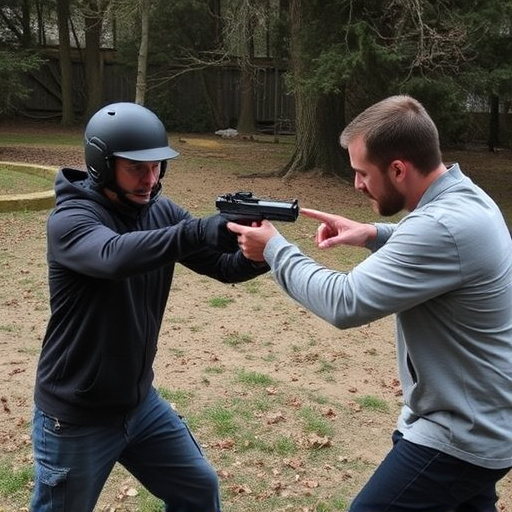Maintain pepper spray between 50-70°F (10-21°C) for optimal potency, avoiding extreme heat or cold. Store in cool, dry, dark places, below 60% humidity, and protect from direct sunlight to preserve stability and shelf life. Use airtight containers, regularly inspect for damage, and keep out of reach of children for safety and effectiveness.
“Uncover the power and precision of police-grade inflammatory pepper spray compounds. This comprehensive guide delves into the intricate world of pepper spray composition, stability, and optimal storage conditions. From understanding key components to best practices for longevity and effectiveness, we explore what ensures peak performance. Discover the ideal best storage temperature for pepper spray and unlock the secrets to maintaining its potency. Stay informed, stay safe.”
- Understanding Pepper Spray Composition and Stability
- Factors Affecting Optimal Storage Conditions
- Best Practices for Longevity and Effectiveness
Understanding Pepper Spray Composition and Stability
Pepper spray, a powerful law enforcement tool, is composed of capsaicin, the active ingredient derived from chili peppers. Understanding its composition is crucial to ensuring effectiveness and safety. The stability of pepper spray can be influenced by various factors, with temperature playing a significant role. Maintaining the optimal storage temperature for pepper spray is essential to preserve its potency.
The best storage temperature for pepper spray typically ranges between 50-70°F (10-21°C). Extreme temperatures can degrade the capsaicin, reducing the spray’s impact. Proper storage involves keeping it out of direct sunlight and in a cool, dry place to maintain stability. This simple measure ensures that officers have access to a reliable form of self-defense when needed.
Factors Affecting Optimal Storage Conditions
The optimal storage conditions for police-grade inflammatory pepper spray compound are critical to maintaining its effectiveness and potency. Several factors, all interrelated, play a crucial role in ensuring the spray remains potent when needed. The best storage temperature for pepper spray typically ranges between 2°C and 8°C (35°F and 46°F). Exposing it to extreme heat or cold can significantly reduce its active ingredients’ stability, leading to decreased efficacy.
Humidity levels must also be carefully controlled, ideally keeping them below 60%. High humidity can promote the growth of mold and bacteria, which are detrimental to the spray’s integrity. Additionally, light exposure should be minimal; direct sunlight or artificial lighting with high UV levels can break down the chemical compounds within the spray. Storing pepper spray in a secure, cool, dry, and dark environment ensures its maximum shelf life and readiness for use when required by law enforcement personnel.
Best Practices for Longevity and Effectiveness
To ensure longevity and maximize the effectiveness of your pepper spray compound, proper storage is paramount. The best storage temperature for pepper spray ranges between 50°F to 70°F (10°C to 21°C). Extreme temperatures can cause the chemical composition to degrade over time, reducing its potency. It’s crucial to store the spray in a cool, dry place, away from direct sunlight and heat sources. Consider using an airtight container to protect it from moisture and contaminants.
Regular maintenance checks are essential. Periodically inspect the spray for any signs of damage or leakage. Ensure the nozzle is sealed tightly to prevent accidental discharge. Additionally, keeping the pepper spray out of reach of children and pets is vital for both safety and preservation. Adhering to these best practices will help maintain the integrity of your pepper spray compound, ensuring it remains effective when needed most.
In conclusion, understanding the composition and stability of pepper spray, as well as the factors influencing optimal storage conditions, is essential for maintaining its longevity and effectiveness. By adhering to best practices, including storing pepper spray at the recommended best storage temperature (typically below 77°F or 25°C), you can ensure its readiness when needed most. Regular maintenance and proper handling are key to maximizing the potency of this powerful self-defense tool.
